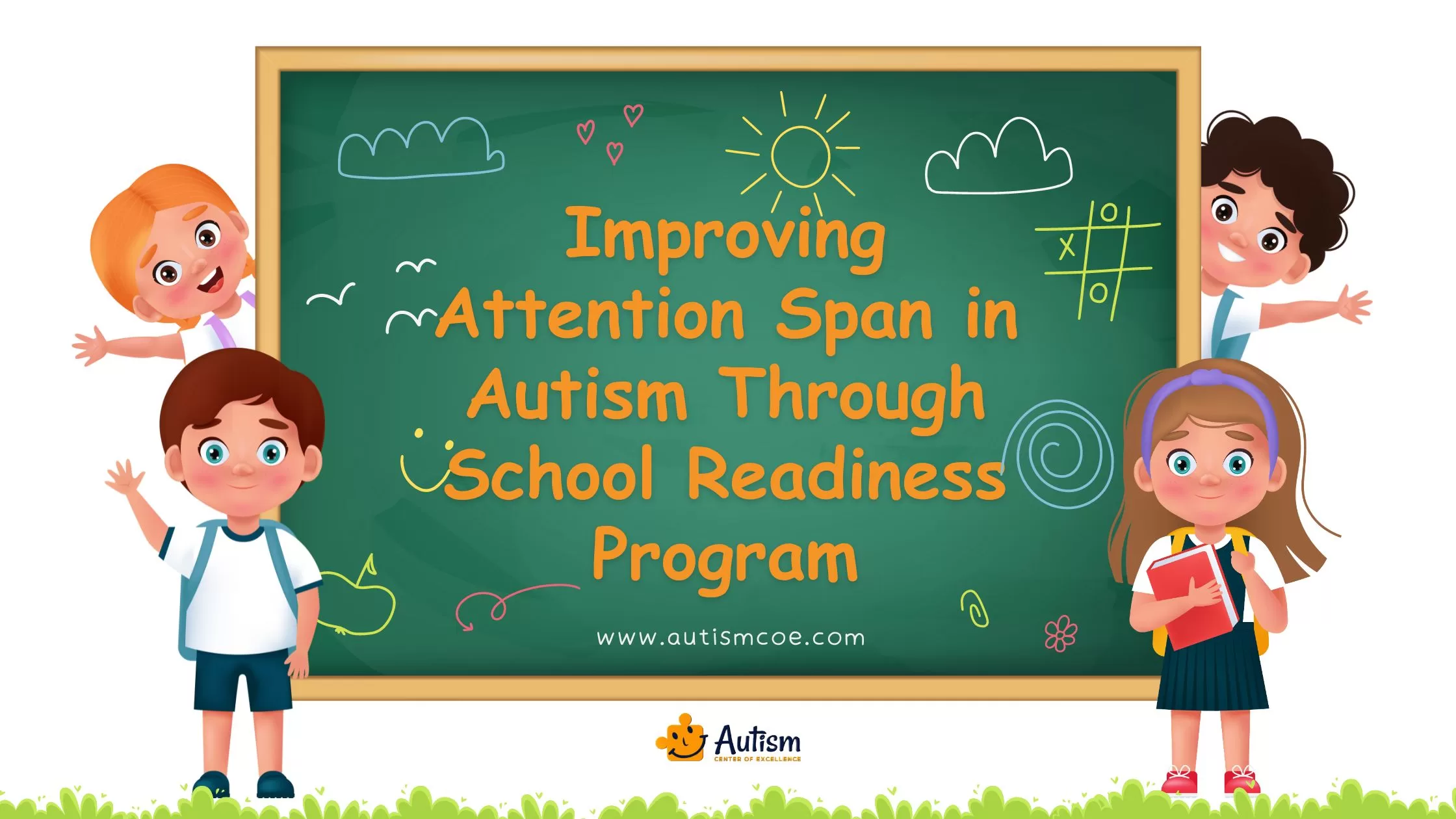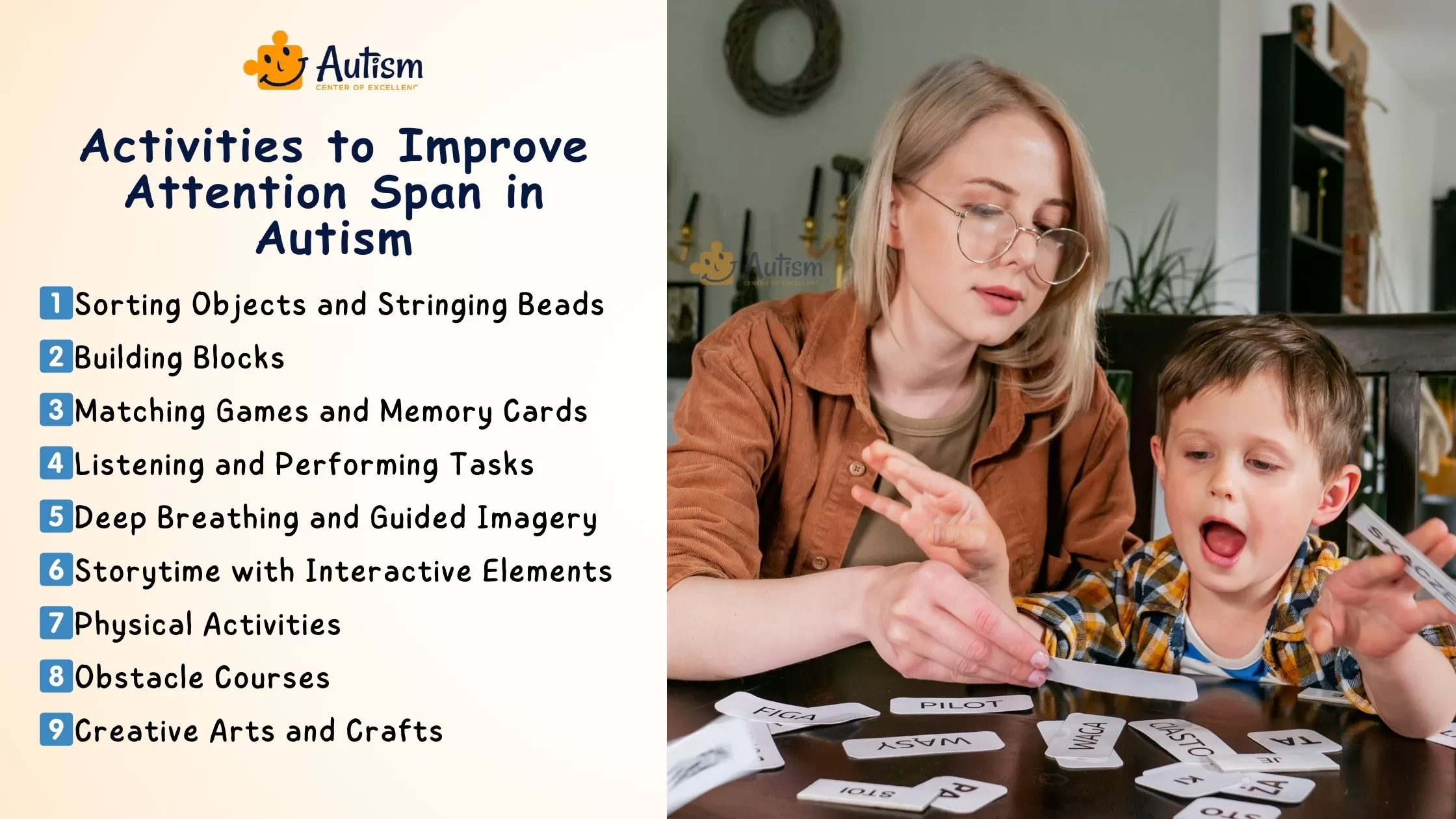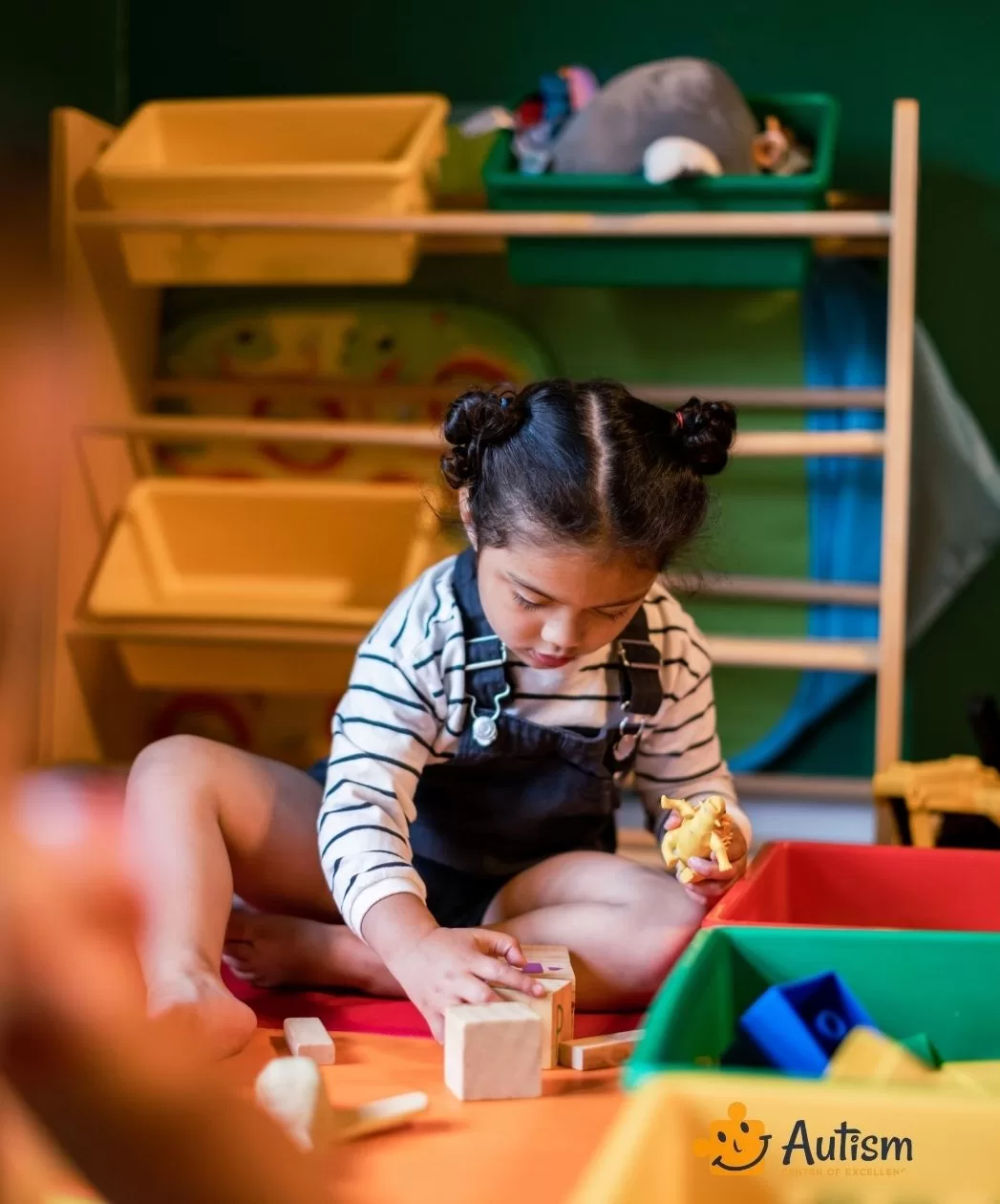Unit 36: Improving Attention Span in Autism Through School Readiness Program

Issues of attention span characterize children with autism. Focusing becomes tough for them, which often makes them falter in either learning or social interaction. Improving their focus is not a mere means to academic success; rather, it equips these children to understand their world much better.
The journey can be quite complicated for parents, educators, and therapists, but it has much potential to make profound differences in the learning and social skills of children. Here in this blog, we will discuss how School Readiness Programs can help children with autism develop their ability to focus, and some practical strategies and activities that can be pursued in this effort.
School Readiness Programs have been deemed crucial to overcome these problems. Usually, for such children, such programs introduce structured learning environments, routines, and ABA Interventions, which are taught through customized methods to help autistic children improve their attention span.
Does Autism Affect Attention Span?
Children with autism Spectrum Disorder (ASD) tend to have problems sustaining attention that is directed to any one thing for the usual length of time, especially when there is much overstimulation or when stimuli lack structure. In effect, this makes learning in a traditional classroom type of setup quite challenging because sustained attention is often expected.
Research indicates that the neurological differences in children with autism can significantly affect how they process information, leading to variations in their cognitive functions. These differences often contribute to shorter attention spans, making it challenging for them to concentrate on tasks for extended periods. As a result, this can lead to academic difficulties, as maintaining focus is crucial for effectively absorbing new information and Developing Essential Skills.
Furthermore, the inability to sustain attention can hinder their participation in classroom activities, limit their engagement with peers, and impact their overall learning experience, emphasizing the need for tailored educational strategies that accommodate their unique processing styles.

Signs of Short Attention Span in Children with Autism
The first thing that needs to be done for the short attention span disorder is to pay attention to the symptoms of such disorders. Children suffering from autism often;
- Children with autism often fidget or switch activities frequently.
- These children struggle to complete tasks.
- They find it difficult to focus on one activity for an extended period.
- They easily get distracted by their surroundings.
- They may exhibit repetitive behaviors that hinder their concentration.
Knowing the signs of autism can be helpful to childcare specialists and teachers in adjusting their approach to meet the child’s needs better.
Suggested – Top 9 Signs Your Infant May Have Autism
How School Readiness Programs Improve Attention Span
School readiness programs specifically designed for children with autism tackle Attention Span challenges head-on. These programs provide a structured learning environment that helps children concentrate on a subject since this is very crucial to retaining their focus. Routine and repetition help children learn what is expected of them; therefore, levels of anxiety will reduce, and the ability to focus will increase.
ABA Therapy is a basic component of these programs, incorporating reinforcement strategies to encourage desired behaviors, shaping-which is a process of building a chain of small steps, and task analysis in which the breakdown of large tasks into smaller and manageable steps will be done. All these methods are flexible and catered to fit individual needs.
Enjoying Reading?
Join Our Weekly Newsletters!
Subscribe now to stay updated with our latest email updates.

Activities to Improve Attention Span in Autism
An appropriate activity will be the perfect step that can enhance the concentration power in the child, especially if the child happens to be diagnosed with the condition of autism. These activities are beneficial for increasing and enhancing their ability to concentrate, and the way they are presented to make learning fun-filled and interesting is also essential.
Here are several evidence-based activities used in school readiness programs, each explained in detail to highlight their specific benefits:
Sorting Objects and Stringing Beads
Such games include coloring and arranging objects in boxes, depending on color, shape, or size, and stringing of beads. Playing in such ways enhances the ability of a child to concentrate since they will have to keep an eye on something. These activities also make fine motor skills strong, which is necessary for writing and other things done daily.
Building Blocks
Building with blocks requires a child to think ahead and make structures, improving attention and problem-solving skills. Building with blocks also enhances spatial awareness and encourages creativity since they visualize different structures.
Matching Games and Memory Cards
These games also work best for improving memory, attention, and pattern matching. In these activities, the brain is trained to remember something for a much longer time because children are being forced to remember images or cards.
Listening and Performing Tasks
Listening activities in which a series of directions and commands are given, such as those in the playing of Simon Says, or following a dance or routine, shape auditory processing and enable them to concentrate on task execution, thus developing multitasking ability and the capacity to follow direction.
Deep Breathing and Guided Imagery
These exercises teach a child to control breathing, which is soothing and helps focus. Guided imagery is a process that walks children through a set of calming visualizations to practice mental discipline and self-regulation.
Storytime with Interactive Elements
Use puppets or props to read a story to them; make them act out parts of the story and also ask them to predict what will happen next. The outcome is deeper listening, increased comprehension, and the ability to listen over longer periods as they become very interested in the story itself.
Physical Activities
Some easy yoga poses that were developed with kids in mind help the mind focus through movement and rhythmic breathing. Body awareness and relaxation help teach children how to move their energy and clear their minds.
Obstacle Courses
An obstacle course design tests the children to do physical acts of the task in the sequence given. Completing each portion of the course requires attention improvement, refines motor coordination, and sets up problem-solving skills.
Creative Arts and Crafts
Art projects allow children to be self-expressive while completing a task from start to finish. All these paintings, drawings, and making of collages require sustained attention from a child and stimulate creativity in their minds. It also improves fine motor skills as well as accomplishment at the end.
These activities can then be incorporated into a regular daily schedule where children can slowly and progressively build the capacity to maintain their attention in a non-threatening and engaging environment. The activity will make sure it is distinct for every Child with Autism since every child requires something unique.
Behavioral Interventions to Increase Attention Span
Behavioral interventions are among the best methods of improving attention spans. ABA Techniques such as reinforcement strategies play a crucial role. The strategy of rewarding children for maintaining focus and completing their tasks reinforces positive behavior. Shaping is also the process of reinforcing successive approximations of a desired behavior and can work its way to help lead children toward improvements in attention.
Then, task analysis takes the larger activities and breaks them into smaller parts, so a child can focus on one component at a time. This helps to keep attention while accomplishing the task.
Including parents and caregivers in the interventions is also crucial. Since they make up an important part of the home environment, supporting their efforts will add up to providing a constant environment for child development when this is reinforced at home.

Frequently Asked Questions & Answer
How Can Parents Help Improve Their Child's Attention Span?
Parents can improve their child’s attention span by creating structured routines, minimizing distractions, and engaging in activities that require focus, such as puzzles or memory games. Positive reinforcement for maintaining focus can also be beneficial.
Do Sensory Activities Enhance Attention?
Sensory activities can improve attention since they engage children in focused attention while stimulating the senses. Concentration in sand play, water play, or sensory bins is usually enhanced.
At What Age is Attention Span Typically the Shortest?
Between the ages of one to three years, attention span is usually the shortest. But children during this period will be naturally curious and easily distracted, and naturally, their ability to focus improves with age.
What Factors Influence a Child's Ability to Focus?
An individual child’s ability to pay attention also varies with age, environment, developmental stage, and the presence of other conditions or autism, for example. The right kind of environment and interesting tasks would help improve focus.
Conclusion
Improving attention span in children with autism is a journey that requires patience, dedication, and the right strategies. School Readiness Programs make the environment structured and supportive for the skills training to succeed academically and socially.
One such place is the Autism Center of Excellence, which provides the best-fit programs and accesses to children who have autism so that they might start to build up their attention span, hence moving to develop further. Individual care together with evidence-based strategies creates pathways for the children to thrive.
By understanding and helping overcome attention span issues through school readiness programs and focused activities, we are helping children with autism reach their highest capabilities, enhance their lives, and affect the lives of those around them.
Please Note: The content of this blog is for informational purposes only and should not be considered a substitute for professional medical advice, diagnosis, or treatment. Consult a qualified healthcare professional for personalized guidance tailored to your specific situation.

Bhavika Bhasin
Bhavika Bhasin is the Research and Marketing officer at AutismCOE. She works with children and adults with ASD. Her clinical research includes evaluating various available autism screening and diagnosis methods and their efficacy. She is currently developing a novel screening exam that is indicated to be more accurate than the existing available exams. She is also writes articles papers for various publications.

